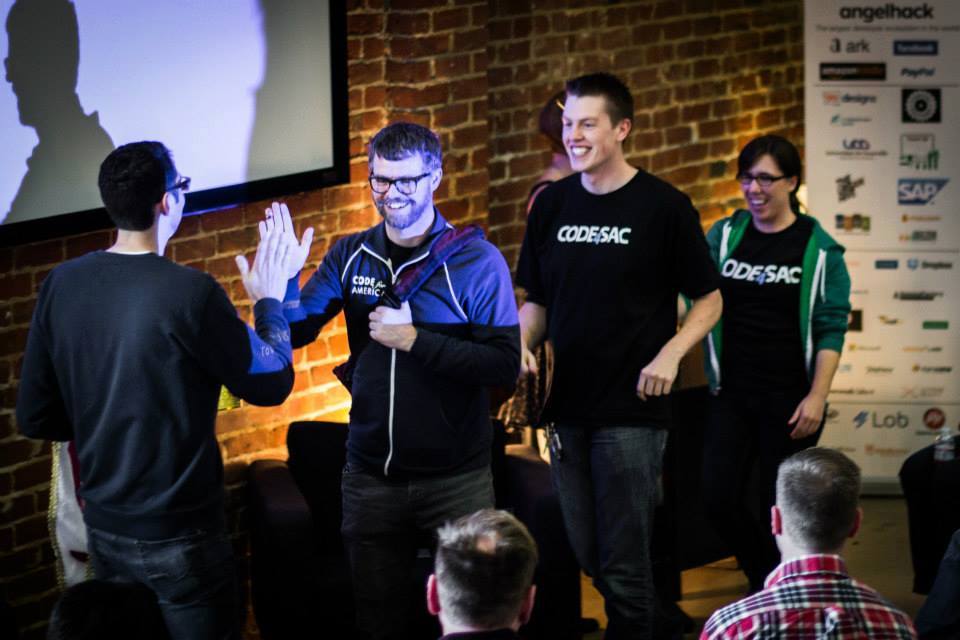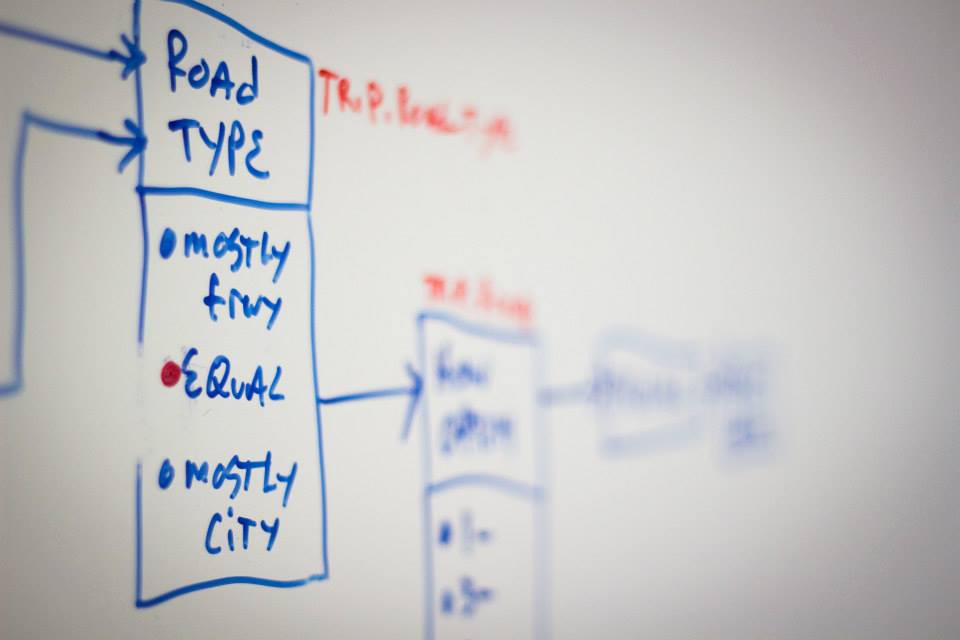Nodebase: The Side Project That Lived Rent Free in My Head for 10 Years
I’m the kind of person who always has a few ideas bouncing around in my head. I’ll catch myself thinking things like, “How would I build this?” or “Would people actually pay for this?” Some ideas disappear as quickly as they came—often before I’ve even finished a shower. But every once in a while, an idea lingers. One of them has stuck with me for nearly a decade, like a polite, long-term roommate.
This particular idea was sparked at a Sacramento hackathon back in December 2013. That weekend, we built a survey (named Leaflr) that asked people questions about their daily commute routines. At the end, it calculated their carbon footprint and offered tips to cut back. It worked well, and we ended up winning first place. But that wasn’t the idea that stayed with me. At least not directly.


While building Leaflr, we created a small framework to define surveys and their steps using JSON. It knew which step to show next, handled branching logic, and made the survey flow smoothly. That framework is what stuck with me. It seemed simple at the time, but over the years, as I gained more experience and worked on complex products at MasterClass, the concept kept evolving. I started to see how powerful it could be if it were fully realized.
Thinking in Flows
Surveys were just the starting point. As I thought more about it, I realized the same building blocks could apply to much more: onboarding flows, cancellation paths, checkout flows, multi-step wizards—you name it. Think about something like a subscription checkout flow. It might include login or sign up, upsell screens, payment, personalization, onboarding, and maybe more depending on the product. Each of those are just a single step in a larger checkout flow.
Taking it one level further a checkout flow is only a single step in a sales funnel. The framework could help you build, modify and change the order of each step of your sales funnel.
Compounding Complexity
Most teams can build out these features without much trouble at first. But as the product grows, the flow becomes more complicated. New offerings, pricing models, and experiments all add layers of complexity to what used to be a straightforward path. Eventually, it turns into a tangled web that’s hard to fully understand or modify.
Let’s say you want to test moving the signup step further down the funnel because users are bouncing early. It sounds simple, but making that change could be painful and time-consuming.
And then there’s everyone’s favorite: tech debt 😈. Maybe that old promo or A/B test never got cleaned up. Now your codebase has outdated logic paths that nobody’s sure are still in use. Making updates becomes a guessing game.
Feature Orchestration
To solve this, I started thinking about a better way—a single source of truth that represents the flow visually, like the diagrams we whiteboard as product teams. But instead of staying on a whiteboard, it connects directly to your codebase. The framework becomes an orchestrator of your user’s journey through the app.
At the core of this system are steps. A step could be a question in a survey or a signup screen in a checkout flow. Steps can contain elements—like text, multiple choice inputs, or NPS questions. If it’s a custom step, like signup or checkout, it can be left as a blank canvas to be rendered in your app.
Steps connect through actions, conditional logic, or default connections. An action might be a button click. Logic could be based on user attributes or responses to previous elements.
Building the Flow
Using our checkout flow example, let’s add it to the Nodebase app as a visual workflow. Later Sign Up and Subscription Type are both decider nodes which run logic automatically when encountered in the flow to send users to the proper step. The rest are custom steps which we will need to connect to the UI in our app.

It’s a simple example and you may be thinking Nodebase might not be needed but remember that flows grow in complexity over time. What if there were a few more A/B tests, steps, or feature flips present? It gets complicated quickly.
SDK Implementation
After the flow has been designed in the whiteboarding app you can add it to your codebase with the SDKs. The CLI tool can even generate TypeScript types based on your flow, so you know exactly which steps and elements to expect. Then, you wire up the UI using a renderer which will tell the framework what to render for each step or element.
const renderer = {
steps: {
signUp: SignUp,
checkout: Checkout,
onboardingBasic: OnboardingBasic,
onboardingPremium: OnboardingPremium,
},
// We aren't using elements in this flow but if we added
// a survey to our onboarding steps it might look like this
elements: {
text: Text,
multi: MultipleChoice,
}
}
<Flow
slug='checkout-flow'
renderer={renderer}
attributes={{
// attributes can be used in step logic
laterSignUp: experiments.check('later-sign-up'),
}}
/>Each step is a component that receives a flow object from the SDK, allowing you to control progression and set attributes dynamically:
const SignUp = ({ flow }) => {
const handleSubmit = () => {
// Signup logic
if (res.success) {
flow.getNext()
}
}
}const Checkout = ({ flow }) => {
const handleCheckout = () => {
if (res.success) {
flow.setAttribute('subscriptionType', res.subscriptionType)
flow.getNext()
}
}
}Deterministic by Design
The entire flow—including logic—is delivered as JSON and can be fully interpreted client-side. That means you can cache it, run it offline, or even serve it as static content. If you want analytics, experiments, or internal integrations, those can hook in separately.
Who is Nodebase For?
Nodebase is for teams who want to build rich, multi-step user journeys with full control over their UI and internal tools. Most marketing platforms fall apart when you need custom logic or access to internal data. Flow is different.
It’s not just for surveys. It’s for onboarding, cancellations, feature gating, and anything else that can be modeled as a flow. It’s the kind of framework I kept wishing existed—and after 10 years of thinking about it, I’ve finally started building it.